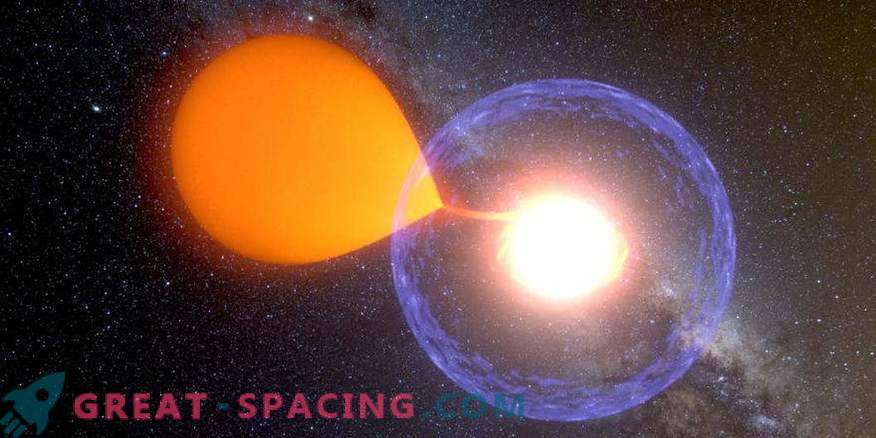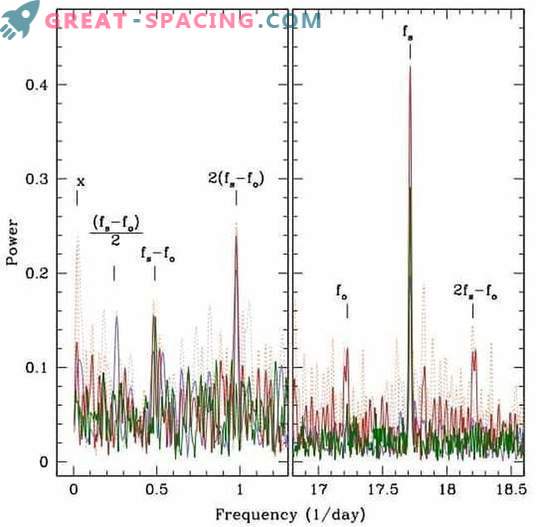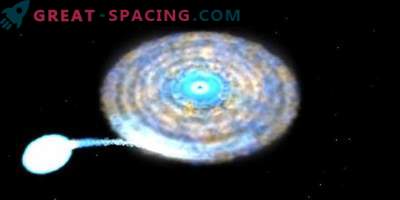has been detected

Scientists from the National Autonomous University of Mexico have extracted new details on the nature of the cataclysmic variable IGR 1955 + 0044. The analysis shows that we have an asynchronous short period of polarity.
Cataclysmic variables (CV) are binary star systems represented by a white dwarf and a regular neighbor. Behind them there is an irregular increase in brightness with a large coefficient, after which they return to a state of rest. Polars are a subclass of CV and are distinguished by the presence of a strong magnetic field in white dwarfs.
IGR 1955 + 0044 was found in 2006 by the INTEGRAL telescope. Further reviews have confirmed that we are faced with a magnetic cataclysmic variable. Three powerful telescopes were used for observation and spent 3 years (2011-2014).

You see the power spectra of multi-band photometry IGR 1955 + 0044. The blue curves are for the V-band, the red are for I, and the green are for the light curve of WL
Repeated optical observations have helped to accurately identify sources and periods of variability, to be assigned to the correct class. The analysis shows that the white dwarf has a rotation period of 83.6 minutes, and the binary orbital period 81.3 minutes. So, this is asynchronous polarity, and one of the most extreme.
Scientists emphasize that this is one of the highest asynchronism rates. There is no exact certainty as to the reason for the deviation, but it may be that such a condition is not uncommon. The intensity of the white dwarf magnetic field reaches 16 MG and does not exceed 20 MG.











































